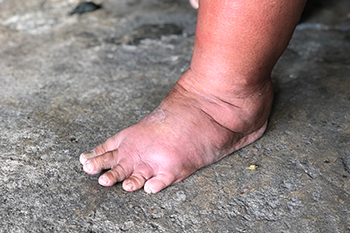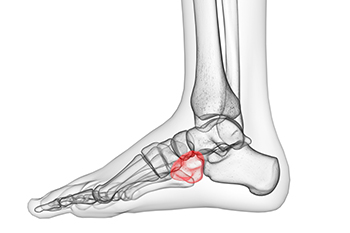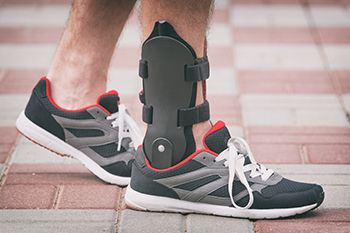
Athlete’s foot, medically known as tinea pedis, is a fungal infection that is not limited to athletes. Anyone can contract the infection if exposed to the highly contagious fungi, known as dermatophytes, that cause it. The most common symptom of athlete’s foot is an itching and burning sensation between the toes or on the bottom of the foot, along with a scaly rash. You may also experience painful cracking of the skin, blistering, and thickening on the soles of the foot. While athlete’s foot is not considered to be dangerous, it can result in a secondary infection if bacteria enter the broken skin. The main complication of having athlete’s foot is infecting other parts of the body that have touched your feet. In addition, anyone sharing personal items or showering spaces with you is at increased risk of infection. Athlete’s foot is treatable with anti-fungal creams, lotions, powders, and sprays. If symptoms persist after a few weeks, please consult a podiatrist who can examine the infected area and prescribe medications or creams that are more potent.
Athlete’s foot is an inconvenient condition that can be easily reduced with the proper treatment. If you have any concerns about your feet and ankles, contact one of our podiatrists from InStride Family Foot Care. Our doctors will treat your foot and ankle needs.
Athlete’s Foot: The Sole Story
Athlete's foot, also known as tinea pedis, can be an extremely contagious foot infection. It is commonly contracted in public changing areas and bathrooms, dormitory style living quarters, around locker rooms and public swimming pools, or anywhere your feet often come into contact with other people.
Solutions to Combat Athlete’s Foot
- Hydrate your feet by using lotion
- Exfoliate
- Buff off nails
- Use of anti-fungal products
- Examine your feet and visit your doctor if any suspicious blisters or cuts develop
Athlete’s foot can cause many irritating symptoms such as dry and flaking skin, itching, and redness. Some more severe symptoms can include bleeding and cracked skin, intense itching and burning, and even pain when walking. In the worst cases, Athlete’s foot can cause blistering as well. Speak to your podiatrist for a better understanding of the different causes of Athlete’s foot, as well as help in determining which treatment options are best for you.
If you have any questions please feel free to contact our offices located in Concord, Charlotte, and Salisbury, NC . We offer the newest diagnostic and treatment technologies for all your foot and ankle needs.









